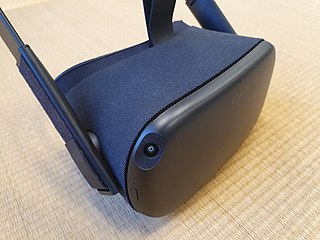This article may contain an excessive number of citations .(November 2023) |
Arnav Kapur is a computer scientist and engineer at MIT. He is known for his work and advocacy in developing AI systems that enhance and complement human abilities.
This article may contain an excessive number of citations .(November 2023) |
Arnav Kapur is a computer scientist and engineer at MIT. He is known for his work and advocacy in developing AI systems that enhance and complement human abilities.
In 2016, Kapur worked at the Biomedical Cybernetics Laboratory at Harvard Medical School. While at Harvard, he showed that gene expression data in microarray and RNA-Seq experiments, could be considered approximately low-rank, which could then be used to reliably predict the data. [1] [2] [3] [4]
After this, Kapur attended Massachusetts Institute of Technology, working at the MIT Media Lab. [5] [6] [7] While at MIT, he developed a peripheral neural interface, dubbed AlterEgo, that recorded neuromuscular signals, sent from the brain to the various muscles of the speech system through subtle and voluntary stimulation, and transcribed them into basic speech commands. [5] [8] [9] [10] [11] This created a silent speech interface, having applications in facilitating speech for individuals who had lost the ability to communicate verbally. [12] [13] [14] [15] [16] [17] In 2018, Kapur in an interview with 60 Minutes, detailed the inner workings of the prototype and showcased a live demonstration. [18] [19] [20] [21] In 2019, Kapur gave a talk at TED, and demonstrated an updated version of the system. [22] [23] [24] [25] [26] He talked about how ethics can inform design and engineering as a principle [24] [27] [28] [29] [30] and advocated for technologies such as AI to be designed in a way that extended human capabilities. [29] [31] [32] [33]
Kapur has also exhibited artwork and AI tools that collaborate with human artists. [34] His work has been exhibited at alt.ai New York, Design Museum, Art Center Nabi. [35] [36] [37] [38] [39]
In 2020, Kapur featured on TIME magazine's 100 Best Inventions of 2020. [40] He has been awarded the Lemelson-MIT graduate prize. [41]
Speech synthesis is the artificial production of human speech. A computer system used for this purpose is called a speech synthesizer, and can be implemented in software or hardware products. A text-to-speech (TTS) system converts normal language text into speech; other systems render symbolic linguistic representations like phonetic transcriptions into speech. The reverse process is speech recognition.
The Lemelson–MIT Program awards several prizes yearly to inventors in the United States. The largest is the Lemelson–MIT Prize which was endowed in 1994 by Jerome H. Lemelson, funded by the Lemelson Foundation, and is administered through the School of Engineering at the Massachusetts Institute of Technology. The winner receives $500,000, making it the largest cash prize for invention in the U.S.

Computer-mediated reality refers to the ability to add to, subtract information from, or otherwise manipulate one's perception of reality through the use of a wearable computer or hand-held device such as a smartphone.
An alter ego is an alternate personality or persona.

Intelligence amplification (IA) refers to the effective use of information technology in augmenting human intelligence. The idea was first proposed in the 1950s and 1960s by cybernetics and early computer pioneers.

Rosalind Wright Picard is an American scholar and inventor who is Professor of Media Arts and Sciences at MIT, founder and director of the Affective Computing Research Group at the MIT Media Lab, and co-founder of the startups Affectiva and Empatica.
NeuroSky, Inc. is a manufacturer of brain-computer interface (BCI) technologies for consumer product applications, which was founded in 2004 in Silicon Valley, California. The company adapts electroencephalography (EEG) and electromyography (EMG) technology to fit a consumer market within a number of fields such as entertainment, education, automotive, and health.

Wearable technology is any technology that is designed to be used while worn. Common types of wearable technology include smartwatches and smartglasses. Wearable electronic devices are often close to or on the surface of the skin, where they detect, analyze, and transmit information such as vital signs, and/or ambient data and which allow in some cases immediate biofeedback to the wearer.
Silent speech interface is a device that allows speech communication without using the sound made when people vocalize their speech sounds. As such it is a type of electronic lip reading. It works by the computer identifying the phonemes that an individual pronounces from nonauditory sources of information about their speech movements. These are then used to recreate the speech using speech synthesis.
Neurowear is a gadget project organization in Japan founded on the concept of the "Augmented Human Body". The group's first project, known as Necomimi is a headband with a brain wave sensor and motorized cat shaped ears programmed to turn up or down based on the wearer's electroencephalogram influenced by "thoughts and emotions". neurowear collaborated with Qosmo and Daito Manabe on "unboxxx" exhibition in July 2012 at Gallery KATA Ebisu.

Ramesh Raskar is a Massachusetts Institute of Technology associate professor and head of the MIT Media Lab's Camera Culture research group. Previously he worked as a senior research scientist at Mitsubishi Electric Research Laboratories (MERL) during 2002 to 2008. He holds 132 patents in computer vision, computational health, sensors and imaging. He received the $500K Lemelson–MIT Prize in 2016. The prize money will be used for launching REDX.io, a group platform for co-innovation in Artificial Intelligence. He is well known for inventing EyeNetra, EyeCatra and EyeSelfie, Femto-photography and his TED talk for cameras to see around corners.
A sticker is a detailed illustration of a character that represents an emotion or action that is a mix of cartoons and Japanese smiley-like "emojis" sent through instant messaging platforms. They have more variety than emoticons and have a basis from internet "reaction face" culture due to their ability to portray body language with a facial reaction. Stickers are elaborate, character-driven emoticons and give people a lightweight means to communicate through kooky animations.

Windows Mixed Reality (WMR) is a discontinued platform by Microsoft which provides augmented reality and virtual reality experiences with compatible head-mounted displays.
Picsart is an Armenian-American technology company based in Miami, Florida and Yerevan, Armenia that develops the Picsart suite of online photo and video editing applications, with a social creative community. The platform allows users to take and edit pictures and videos, draw with layers, and share the images on Picsart and other social networks. It is one of the world's most popular apps, with reportedly more than 1 billion downloads across 180 countries.
The machine translation of sign languages has been possible, albeit in a limited fashion, since 1977. When a research project successfully matched English letters from a keyboard to ASL manual alphabet letters which were simulated on a robotic hand. These technologies translate signed languages into written or spoken language, and written or spoken language to sign language, without the use of a human interpreter. Sign languages possess different phonological features than spoken languages, which has created obstacles for developers. Developers use computer vision and machine learning to recognize specific phonological parameters and epentheses unique to sign languages, and speech recognition and natural language processing allow interactive communication between hearing and deaf people.

VRChat is an online virtual world platform created by Graham Gaylor and Jesse Joudrey and operated by VRChat, Inc. The platform allows users to interact with others with user-created 3D avatars and worlds. VRChat is designed primarily for use with virtual reality headsets, such as the Oculus Rift and Oculus Quest series, SteamVR headsets, and Windows Mixed Reality, but is also usable without VR in a "desktop" mode designed for either a mouse and keyboard or gamepad.
AlterEgo is a wearable silent speech output-input device developed by MIT Media Lab. The device is attached around the head, neck, and jawline and translates your brain speech center impulse input into words on a computer, without vocalization.

The first-generation Oculus Quest is a discontinued virtual reality headset developed by Oculus, a brand of Facebook Inc., and released on May 21, 2019. Similar to its predecessor, Oculus Go, it is a standalone device, that can run games and software wirelessly under an Android-based operating system. It supports positional tracking with six degrees of freedom, using internal sensors and an array of cameras in the front of the headset rather than external sensors. The cameras are also used as part of the safety feature "Passthrough", which shows a view from the cameras when the user exits their designated boundary area. A later software update added "Oculus Link", a feature that allows the Quest to be connected to a computer via USB, enabling use with Oculus Rift-compatible software and games.

Live Transcribe is a smartphone application to get realtime captions developed by Google for the Android operating system. Development on the application began in partnership with Gallaudet University. It was publicly released as a free beta for Android 5.0+ on the Google Play Store on February 4, 2019. As of early 2023 it had been downloaded over 500 million times. The app can be installed from an .apk file by sideloading and it will launch, but the actual transcription functionality is disabled, requiring creation of an account with Google.
This article needs additional or more specific categories .(November 2023) |